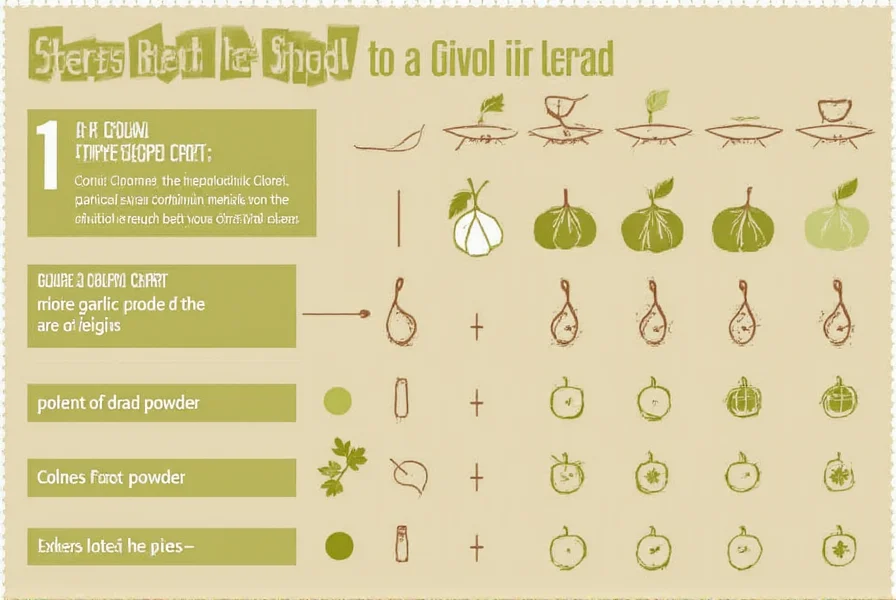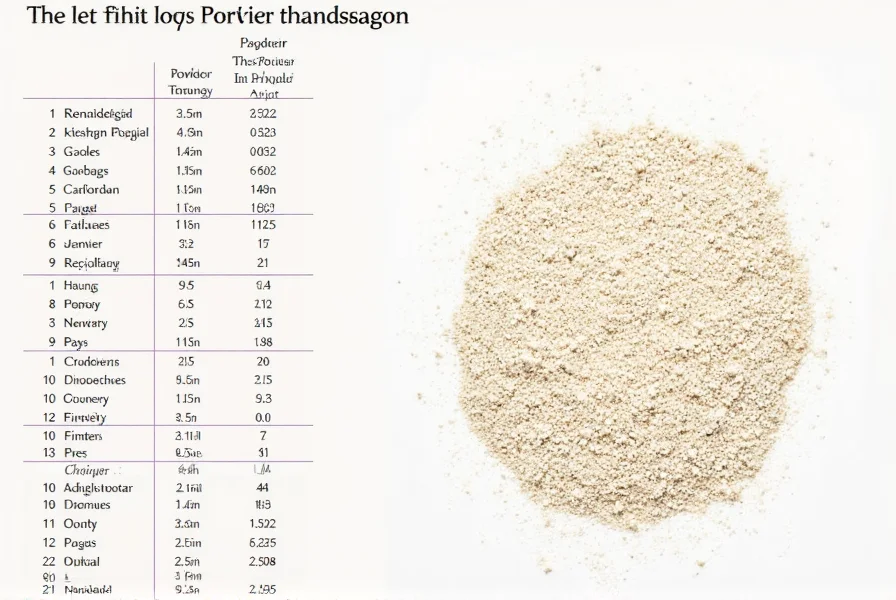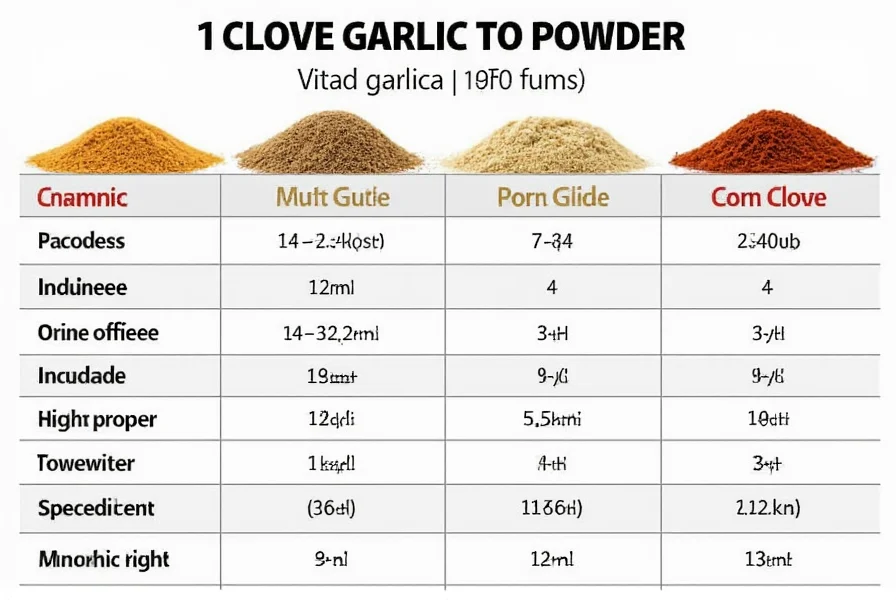Understanding garlic measurements can transform your cooking experience. When recipes call for fresh garlic but you only have garlic powder in your pantry, knowing the precise conversion ratio prevents flavor disasters. This guide provides accurate measurements, practical substitution tips, and culinary insights to help you navigate between fresh and powdered garlic with confidence.
Garlic Measurement Fundamentals
Garlic exists in multiple forms, each with distinct flavor profiles and potency levels. Fresh garlic cloves contain moisture and enzymes that create complex flavors when crushed or chopped. Garlic powder, being dehydrated, concentrates certain compounds while losing others. The conversion isn't merely about volume—it's about balancing flavor intensity in your dishes.
Precise Garlic Conversion Chart
| Fresh Garlic | Garlic Powder Equivalent | Garlic Salt Equivalent* |
|---|---|---|
| 1 small clove (0.5") | 1/16 tsp | 1/8 tsp |
| 1 medium clove (0.75") | 1/8 tsp | 1/4 tsp |
| 1 large clove (1") | 3/16 tsp | 3/8 tsp |
| 3 cloves | 3/8 tsp | 3/4 tsp |
| 6 cloves | 3/4 tsp | 1 1/2 tsp |
*Garlic salt contains additional sodium—adjust other salt in recipe accordingly

Flavor Profile Differences
While the garlic clove to powder ratio provides volume conversion, understanding flavor differences is equally important. Fresh garlic delivers a sharp, pungent bite that mellows when cooked, developing sweet, nutty notes. Garlic powder offers consistent, earthy flavor without the sharpness but lacks the complexity of fresh garlic's enzymatic reactions.
When substituting garlic powder for fresh garlic in recipes, consider these factors:
- Garlic powder works better in dry rubs and long-cooked dishes
- Fresh garlic excels in quick-cooking applications and raw preparations
- Powdered garlic dissolves completely, while fresh garlic maintains texture
- Garlic powder's flavor is more immediate, while fresh garlic develops gradually
Practical Substitution Guidelines
For most savory dishes, the standard 1 clove fresh garlic to 1/8 teaspoon garlic powder conversion works well. However, experienced cooks adjust based on several factors:
When to increase powder amount:
- Using older garlic powder (flavor diminishes over time)
- Preparing dishes with competing strong flavors (curries, chili)
- When recipe specifies "strong garlic flavor"
When to decrease powder amount:
- Delicate dishes like fish or light sauces
- When using premium, freshly ground garlic powder
- In raw applications like salad dressings

Real-World Recipe Applications
Understanding how many teaspoons of garlic powder equals one clove of garlic becomes crucial when adapting recipes. Consider these common scenarios:
Pasta Sauce Conversion:
Original: 4 cloves fresh garlic
Substitution: 1/2 teaspoon garlic powder + 1 teaspoon water (to mimic moisture content)
Roast Chicken Rub:
Original: 6 cloves minced garlic + 2 tablespoons oil
Substitution: 3/4 teaspoon garlic powder + 1/4 teaspoon onion powder + 2 tablespoons oil
Homemade Salad Dressing:
Original: 2 cloves fresh garlic
Substitution: 1/4 teaspoon garlic powder + small pinch of sugar (to balance sharper flavor)
Storage and Shelf Life Considerations
Fresh garlic and garlic powder have dramatically different shelf lives, affecting your substitution decisions. A single garlic clove stored properly lasts 3-6 months, while garlic powder maintains peak flavor for 2-3 years when stored in an airtight container away from light.
As garlic powder ages, its potency decreases. For older garlic powder, you might need to increase the garlic powder to fresh garlic conversion by 25-50% to achieve equivalent flavor. Always smell your garlic powder before using—it should have a strong, clean aroma. If the scent is faint or musty, replace it.
When Substitution Isn't Recommended
While knowing the garlic measurement conversion chart is valuable, some dishes truly require fresh garlic. Avoid substituting powder in:
- Raw applications like aioli or chimichurri
- Dishes where garlic is the star ingredient
- Recipes specifically developed for fresh garlic's enzymatic properties
- When creating garlic confit or roasted garlic
In these cases, consider alternatives like frozen garlic paste or pre-peeled fresh cloves rather than powder.
Creating Your Own Garlic Powder
For superior flavor, make your own garlic powder from fresh cloves. This process preserves more nuanced flavors than commercial products. Simply slice peeled cloves thinly, dehydrate at 135°F (57°C) for 6-8 hours until brittle, then grind to powder in a spice grinder. Store in an airtight container for up to one year.
Homemade garlic powder typically requires slightly less quantity than store-bought due to fresher flavor compounds—use about 20% less when substituting in recipes.











 浙公网安备
33010002000092号
浙公网安备
33010002000092号 浙B2-20120091-4
浙B2-20120091-4